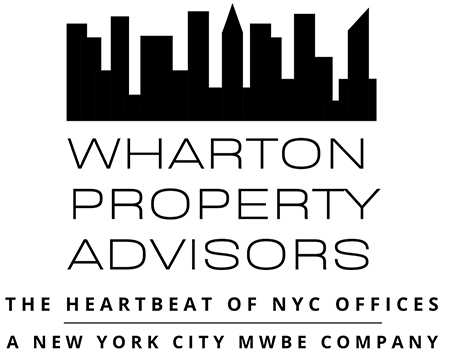Since the onset of the pandemic, there has been a revolution in office work as technology allowed people to work from home. As I have discussed at length in many commentaries there are pluses and minuses to this approach.
However, one thing is certain. Any predictions that employees would be returning to the office in droves at the behest of management have
been well and truly debunked. Over four years into Covid, the metrics show that roughly half of office employees come to the office both in New York City and the entire country. Further, a recent employer survey by Flex Index has found that as of the second quarter of 2024, 69% of companies with U.S. headquarters offer some degree of work location flexibility, and just 31% require their employees to be full-time in the office. This is a significant increase from the first quarter of 2023, when just 51% of employers offered workplace flexibility, As a corollary, the largest plurality of employees work on a “structured hybrid” basis, which only requires them to be in the office certain days as opposed to a full-time work requirement.
Accordingly, as remote work has now become normalized, we can confidently declare that phase 1 of the office revolution is over.
Sadly, this particular form of urban carnage is just beginning. Work from home has been a slow-moving time bomb as leases which used to be 5+ years in duration come off the books and many tenants take less space when they make their next move. Some new developments like Hudson Yards have prospered, but only at the expense of older buildings whose tenants they cannibalized. Four years on from the start of Covid, work from home is now solidly entrenched in the business landscape and is here to stay. Except for the top buildings most landlords can’t cope with a major long-term vacancy and haven’t found alternative uses for the space. Conversions to residential use are fine but are relatively rare because they are expensive and most office buildings don’t have suitable floorplans allowing for the change of use.
We are now in phase 2 of the office revolution, which is effectively the finance phase. We take no pleasure in pointing this out, but many landlords are struggling due to the triple whammy of reduced rent rolls, higher operating costs, and limited financing options.
Values are plummeting in most buildings and borrowing costs are significantly higher. Even if the Federal Reserve cuts rates at some point, most economic observers believe that the days of easy money are in the rear-view mirror and we can expect a higher neutral rate of interest. One good piece of news is that these wise men and women believe there’s no long-term threat to the financial system here. The big banks are very well capitalized and can handle the bad loans. Of course, that is not to say that other debacles like Silicon Valley Bank and Signature Bank are not in the cards.
This new phase also has an impact on tenants. Traditionally, it is the landlord who requests the financial statements of its prospective tenants to assess if they will be able to pay the rent during the lease term. However, that paradigm has now been turned on its head. For the first time in history, tenants need to become familiar with the financial condition of their landlord. That is because so many buildings are in default, or even facing foreclosure, and that number will only increase.
There are many recent examples of this distressing trend. During just the past week or so, there was news that the commercial backed security loan collateralized by Bloomberg Tower at 731 Lexington Avenue is going to special servicing (even though Bloomberg just signed a new lease to remain there until 2040), an action to foreclose upon 750 Lexington Avenue was filed, and a Financial Times article reported on the difficulties being experienced by RFR, the half-owner of the Chrysler Building and the trophy Seagram building which has only been able to get a one-year loan extension. And this is just the tip of the iceberg.
What all these landlord defaults also mean is that tenants need to protect themselves in negotiating certain lease provisions. Most importantly, tenants should demand that the funds for any future work that needs to be done by the landlord be placed in escrow to ensure completion. Similarly, tenants should ensure that all commissions be put in escrow so that they are not liable for any of these expenses.
Another concern is what will happen to building services in the event of a default or foreclosure. The best answer is hopefully nothing if the bank, special servicing agent or trustee is maintaining the building properly. For example, the venerable Helmsley Building at 230 Park Avenue has been in special servicing for over six months. To my experienced eyes, there is no difference whatsoever at 230 Park since it went to special servicing.
However, that may not always be the case. While I don’t expect that landlords will be turning off the heat in February, a new manager might look to reduce expenses in less visible ways, such as skimping on security and cutting maintenance staff. We haven’t seen this yet, and the focus has all been put on improving services to attract tenants, but when push comes to shove it is possible that services in buildings under pressure could deteriorate. Remember that the tenant leases are the most important asset a landlord has so any owner will want to keep up the appearances of a building and not lose more tenants. Nevertheless, it is important to assess the future financial viability of a building by understanding the tenant rent roll and the landlord’s financing profile.
To be fair, any building can be sold at any time. Even in the best of times and in the best buildings, the quality of a new owner can be problematic.
However, the bottom line is this. Almost every major landlord must deal with a significant drop in demand for its inventory which is now baked in the cake. Danger lies ahead in the form of more building defaults, foreclosures and bankruptcies in the second phase of the office revolution. Hopefully, I am wrong but by all appearances phase 2 is just getting started. Let’s just hope it stays under control.
If you need assistance navigating this new phase of the office market or just have questions, please contact us at Wharton Property Advisors. We always represent our clients with creativity, integrity, diligence and independence.
Thank you,
Ruth Colp-Haber
Partner
Counselor of Real Estate
Fellow of Royal Institution of Chartered Surveyors




